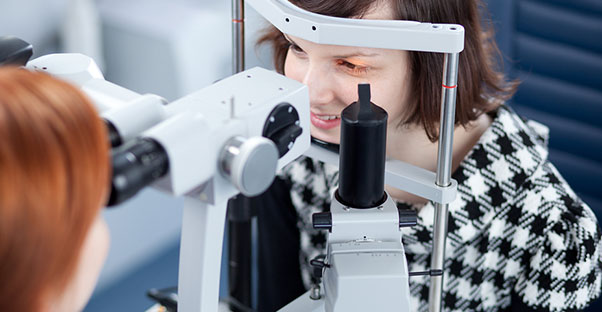What Causes Astigmatism?
The eye has two parts that focus images: the cornea and the lens. In a perfectly shaped eye, each of these focusing elements has a perfectly smooth curved surface. A cornea or lens with this symmetrically curved surface refracts all incoming light the same way and produces a sharply focused image on the back of the eye.
However, if the cornea or lens is not evenly and smoothly curved, the light rays are not refracted properly. This causes a error when focusing the image. Astigmatism is one type of refractive error. In astigmatism, the cornea or lens is curved more steeply in one direction than in another, similar to the shape of a football. Corneal astigmatism is the distortion of the cornea, while lenticular astigmatism is due to problems of the lens. Either type of astigmatism can cause blurred vision. Blurred vision may occur more in one direction — either horizontally, vertically, or diagonally.
Astigmatism may occur in combination with other refractive errors, which include:
- Nearsightedness (Myopia)- This occurs when the cornea is curved too much or the eye is longer than normal. Instead of being focused precisely on the retina, light is focused in front of the retina, resulting in a blurry appearance for distant objects.
- Farsightedness (Hyperopia)- This occurs when the cornea is curved too little or the eye is shorter than normal. The effect is the opposite of nearsightedness. When the eye is in a relaxed state, light is focused behind the back of the eye, making nearby objects blurry.
Astigmatism may be present from birth, or it may develop after an eye injury, disease, or surgery. Astigmatism isn't caused or made worse by reading in poor light, sitting too close to the television, or squinting.
A rare cause of astigmatism occurs when the cornea progressively becomes cone-shaped and thin. This development usually appears around puberty or early adulthood. The cornea is made of transparent collagen fibers that hold the cornea shape in place much like a building is held up by steel beams. Eyes with this condition have weaker collagen fibers. This causes the cornea to bulge out and distort vision. Degeneration may continue to the point where corneal rigid contact lenses no longer solve the vision problems and transplantation of the cornea is necessary. A corneal transplantation is a last resort and has a variable success rate. Fortunately, modern procedures can treat the disease and help patients avoid a cornea transplant.
Another form of astigmatism is lenticular astigmatism. It is caused by abnormalities in another curved structure inside the eye, the lens that also focuses incoming rays. Blurred vision from lenticular astigmatism can be treated with eyeglasses and contact lenses.




